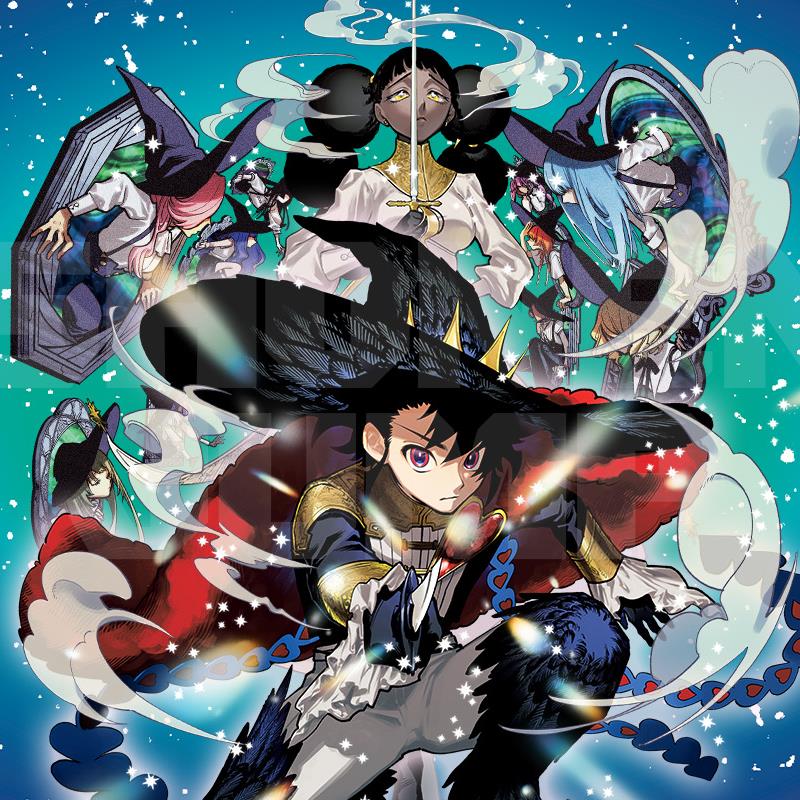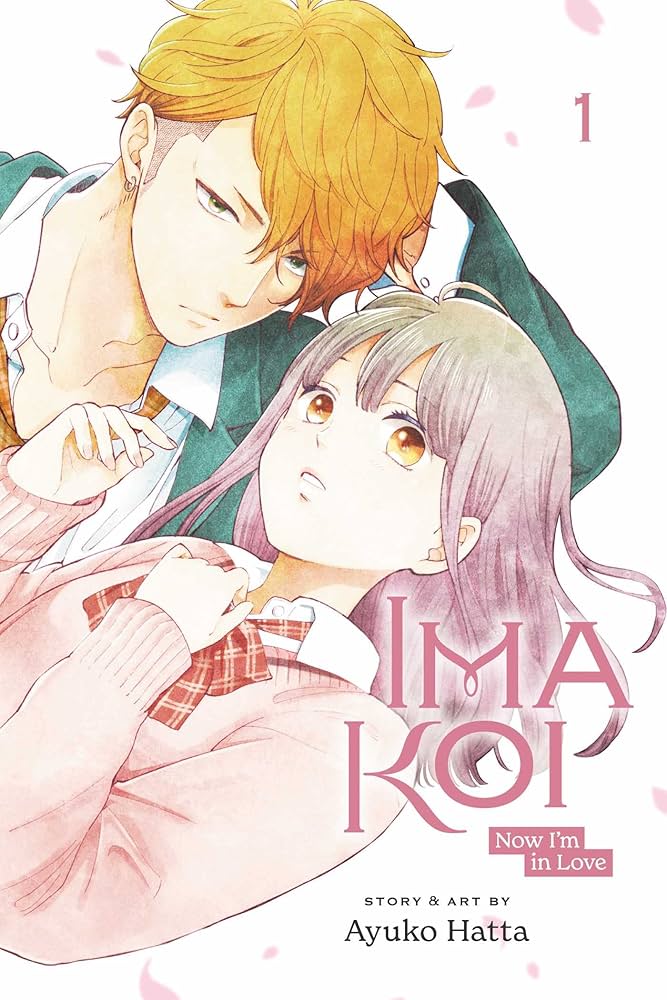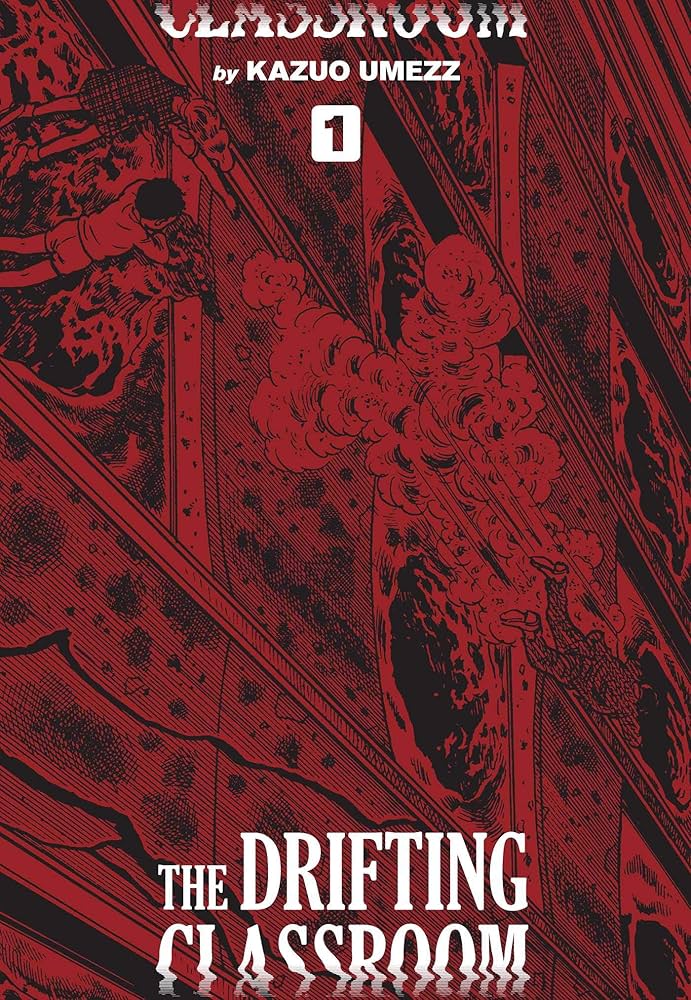
There are two universal truths in today’s rapidly changing comics industry. The first is that Dog Man is the defining comic of our era. The second is that more people are reading manga and Webtoons (aka vertical scroll comics) than ever before. Therefore we at Comics Beat have chosen to embark on a new venture: Beat’s Bizarre Adventure. Every week, three writers will recommend some of their favorite books and series from Japan, Korea and elsewhere. This week we have male witches, courageous romance, and one last farewell to manga horror legend Kazuo Umezz.
Ichi the Witch
Writer: Osamu Nishi
Artist: Shiro Usazaki
Translator: Adrienne Beck
Lettering: John Hunt
Publisher: VIZ
This thrilling fantasy takes place in a world where witches don’t just wield magic—they hunt it down. Majiks, as magic is called here, are mysterious and capricious beings, each with a personality and form. Sometimes they appear as monstrous creatures. At other times they are enchanted objects or elements. Only women can defeat Majiks and acquire their strength, a twist that has branded them as witches and painted the world in feminine power. The notion that a man might be capable of magic is absurd. But here enters Ichi, our young hunter-boy hero, to shake up the female-dominated magic world.
Ichi the Witch launches with vivid illustrations of nature, birds and flowers, establishing the “calm-before-the-storm” before the adventure. Ichi’s introduction is energetic and endearing; he’s like a medieval version of Ash Ketchum, but instead of Pokémon, he will go after Majiks. His personality is refreshing and contrasts brilliantly against the magical, all-female society of witches in elaborate, eye-catching costumes. Although I gravitate toward female protagonists, Ichi’s spunky character promises an engaging journey.
Witches must go through training; they have a hierarchy just like the ninja world where you level up from witch cadets to witches. The best part of magic is how women can use it for daily labor and craft-work as well. In an early scene where Ichi and the witch Desscaras stroll around their village, its various magical items are beautifully drawn.
Shiro Usazaki‘s artwork is a delicious treat, with detailed, expressive faces that evoke nostalgia for classic shojo aesthetics. The designs are reminiscent of iconic characters like Sailor Moon or Candy Candy, but with a slightly modernized edge. It’s refreshing to see a fantasy manga set in a world where architecture references Europe and the Orient rather than rural Japan.
All in all, this series has a unique, intriguing premise and seems poised for adventure. With its lush world-building, expressive character designs and fun sense of humor, it promises an exciting escape. — Ilgın Side Soysal
Ima Koi: Now I’m in Love
Writer/Artist: Ayuko Hatta
Translator: Jan Mitsuko Cash
Retouching and Lettering: Inori Fukuda Trant
Editor: Nancy Thistlethwaite
Design: Shawn Carrico
Publisher: VIZ
Riding the train early in the morning during rush hour is horrible as is, and Satomi Mizusawa is so scared she can’t speak. The stranger behind her is awfully close and right when she tries to discern whether it’s accidental or not, she shivers in disgust: the pervert’s feeling her up. Thankfully some boy gets in between them and they both safely get off at the same station. But Satomi loses sight of the guy without being able to thank him. Now that she is a high school student, she has promised herself one thing: to be courageous and not let chances pass her by!
Ayuko Hatta is a seasoned shojo manga artist best known for their hit series Wolf Girl and Black Prince, which has an animation adaptation as well. It’s safe to say that the series raised some eyebrows due to its relationship dynamic and male lead. Now we have Ima Koi: Now I’m in Love, the artist’s most recent work. It is fully translated into English with 9 volumes in total.
Maybe due to days getting shorter and the weather getting colder, I find myself reaching out to romance and/or comfort series more than usual. I decided to give Ima Koi a chance partly because it was on sale and partly because the covers looked lovely—not to mention I have it bad for delinquent-looking softies. While I have only finished the first volume, you’re getting a recommendation anyway because I had so much fun reading it!
Ima Koi is a shojo manga perfect for people who complain about shojo manga. Satomi is a young woman who regrets she didn’t ask her crush out during junior high, so she swears to be more proactive. When she notices that the boy who helped her on the train wears their school uniform, she sets out to find him. What does she do when she finally meets Yagyu and wants to learn more about him? She creates a chance for them to hang out! What does she do when Yagyu says something that confuses him? She asks for clarification!
These two are super upfront and honest about their feelings. Even when they can’t be, the other picks up on it and immediately tries to communicate. While I don’t know how the rest will go, this first volume is enough to put me under its spell. I’m looking forward to exploring where Yagyu and Satomi’s relationship will go next. Not to mention experiencing the usual high school hijinks manga characters go through along with them. If you’re like me and have a lack of butterflies in your stomach, I suggest you give Ayuko Hatta’s Ima Koi: Now I’m in Love a chance! — Merve Giray
The Drifting Classroom
Writer/Artist: Kazuo Umezz
Translator: Sheldon Drzka
English Adaptation: Molly Tanzer
Lettering: Evan Waldinger
Design: Adam Grano
Editor: Joel Enos
Publisher: VIZ
At the 90th birthday party for effects legend Ray Harryhausen, someone described everyone there as Harryhausen’s Children of the Hydra. It was a nod to the skeletons from Jason and the Argonauts born from the teeth of the Hydra. When it comes to manga, everyone who took inspiration from the late Kazuo Umezz could all be said to be students of The Drifting Classroom. Fifty years after its completion The Drifting Classroom remains the God of Horror Manga’s masterpiece.
The plot of the series is a science fiction nightmare. One day out of nowhere, an entire elementary school is sent to a hellish, post-apocalyptic landscape. The ground is nothing but sand. Giant insects roam, eating anyone foolish enough to wander out. The adults quickly turn on each other and the safety of the surviving students is left to the sixth grade class led by Sho Takamatsu.
What makes The Drifting Classroom so potent is Umezz’s ability to filter people’s fears through a child’s point of view. He draws characters in states of intense fear and terror. When the adults lose it, you can see the loss of sanity on their faces. Umezu’s portrayal of violence remains shocking. It’s still horrifying to see kids jump off buildings and adults attack students all these years later.
Yet Umezu also renders the landscapes of this strange and horrifying world with an eerie beauty. The black skies and even blacker sand dunes are as inviting as they are terrifying. This world welcomes children into its darkness and mysteries even as it tries to kill them.
As the story progresses it only gets weirder. There’s psychic powers, communication between the past and present, and increasing friction among the surviving students. It’s easy reading The Drifting Classroom to see how it inspired artists like Junji Ito, whose title for Dissolving Classroom is clearly a nod to this series, and Kanako Inuki. But no one made horror comics like Kazuo Umezz, and The Drifting Classroom is proof enough why. — D. Morris
Follow Beat’s Bizarre Adventure to get weekly manga and webtoon recommendations!
Discover more from reviewer4you.com
Subscribe to get the latest posts to your email.










